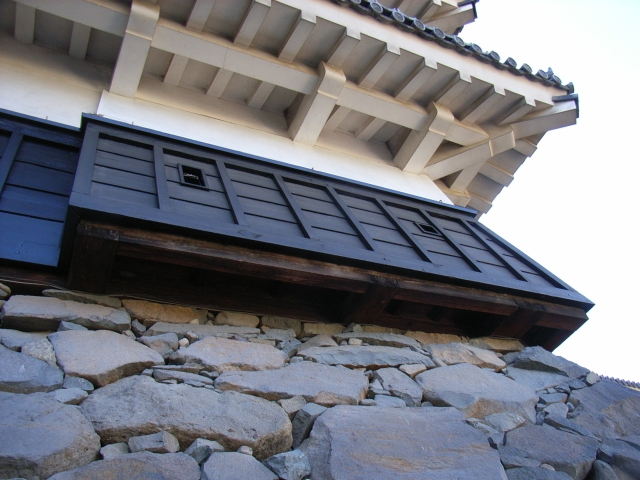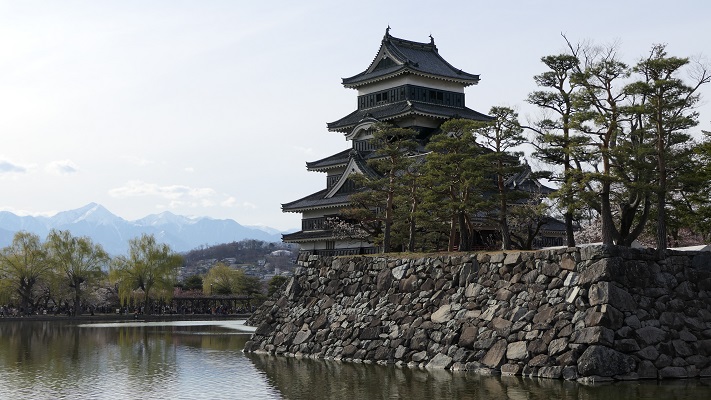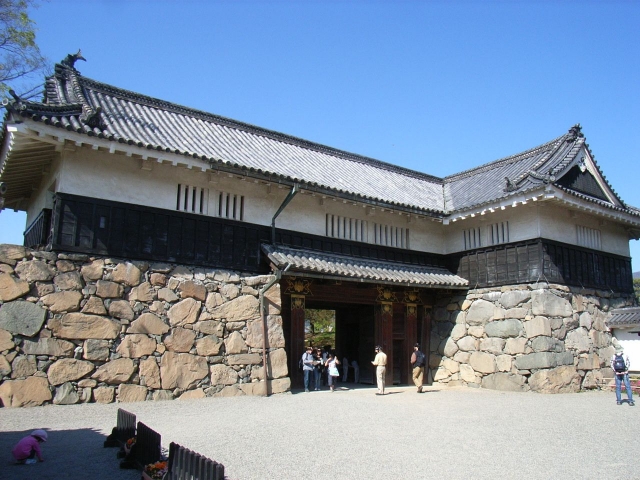
Location and History
現在白河市となっている地域は、日本の東北地方の入り口でありました。古代にはこの地域には、現代においてもよく知られている白河の関がありました。中世にはこの地域にはいくつか城が築かれましたが、白河小峰城はそのうちの一つでした。江戸時代になって、丹羽氏がこの城を治め、御三階櫓と呼ばれた三層の櫓を含め城を完成させました。御三階櫓は14mの高さがあり、その大きさからは事実上の「天守」と言っていいものでした。
The area now called Shirakawa city was the entrance of the Tohoku district in Japan. In the Ancient Ages, the area had the Shirakawa Barrier which is very famous even now. In the Middle Ages, several castles were built in this area, one of them was the Shirakawa-Komine Castle. In the Edo Period, the Niwa clan took over and completed the castle including the three story turret called “Gosankai-Yagura”. Gosankai-Yagura was so large that it could actually be the castle keep “Tenshu” which was 14m tall.
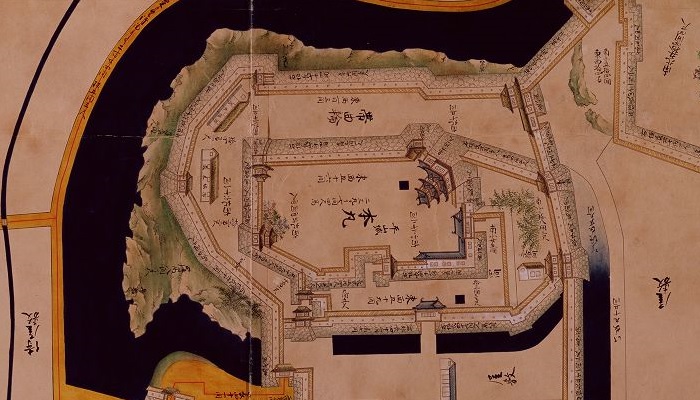
城主は丹羽氏から松平氏など他の大名に何度か変わりました。明治維新のとき、白河口の戦いがこの城の周辺で、新政府軍と旧幕府軍の間で起こりました。幕府軍は新式の装備を備えた政府軍に敗れ去りました。そしてこの城は破壊され、御三階櫓もまた焼け落ちたのです。
The lords of the castle changed from Niwa to others such as the Matsudaira clan. During the Meiji Restoration, the Battle of Shirakawaguchi took placed between the new Government Amy and the former Shogunate Amy around the castle. The Shogunate Amy was beaten by the Government Amy with modern equipment, and the castle was destroyed. Gosankai-yagura was also burned down.
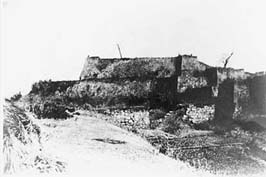
Features
それでも今なお、元の御三階櫓と全く同じ木造建築を見ることができています。
We can still see the wooden building exactly the same as the original Gosankai-Yagura.
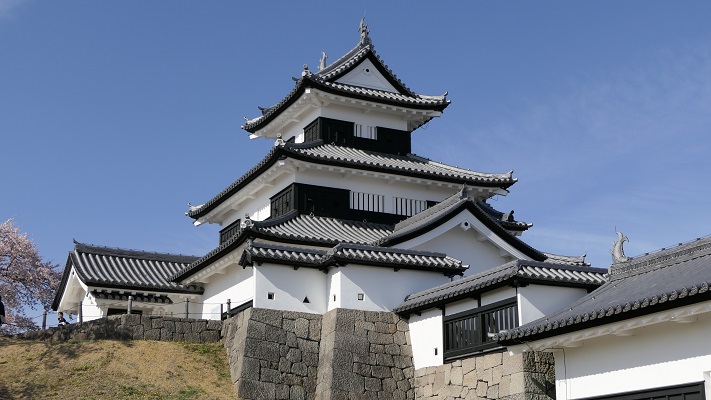
それは、一時期城主だった松平定信が詳細な図面を作成させ、それが幸運にも現代に残っているからです。それに加えて白河市が、元来の工法で櫓を再建することを決断したからです。
That’s because the once lord Sadanobu Matsudaira ordered to make drawings of the castle in details and they luckily still remain. In addition, officials decided to rebuild the building in the original way.
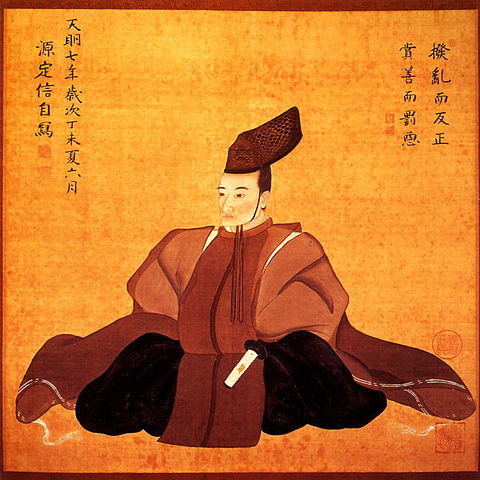
ビジターは中に入ることができます。中はどちらかというと狭く、暗く、階段は急です。それは元通りに作られ、そもそも戦いのための建物だったからなのですが。案内係の方が安全に見て回れるよう誘導してくれます。また、城の周りを囲む石垣も見ものです。この石垣は、2011年の東日本大震災でかなり崩れてしまったのですが、現時点では復旧しています。
Visitors can enter inside. The inside is rather narrow, dark and the stairs are steep as it is made in the old style and originally made for battles. Official instructors will guide you in order to look around safely. It is also recommended to see stone walls surrounding the castle. These walls partly collapsed due to the Great East Japan Earthquake in 2011. But they have already been restored now.
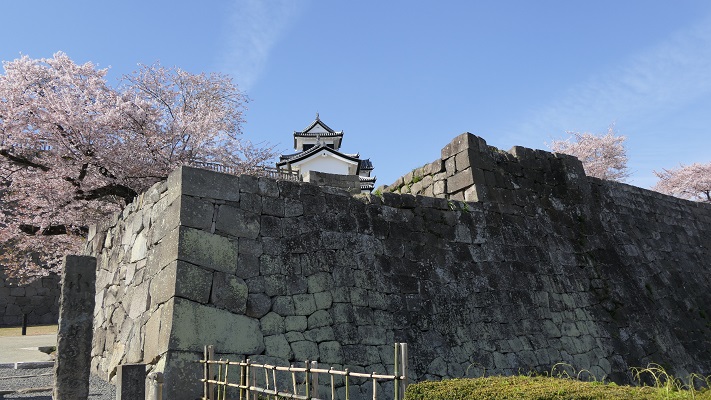
Later Life
明治時代、城跡は公園に転用され、そこには野球場が建設されました。しかし、昭和時代の後半になって、市民の多くの要望により白河市は城跡の整備方針を変更しました。城を往時の状態のまま復元できないか考え始めたのです。それは、大型の城郭建築物を再建する方法としては、現代日本において初めての試みでした。
In the Meiji Era, the ruins of the castle were turned into a park in which the baseball stadium was constructed. But in the late Showa Era, officials changed its policy of developing the ruins because of a lot of request from citizens. They were wondering if the castle would be restored to the original condition. That would be the first attempt in the way large castle buildings are rebuilt in present day Japan.
1970年代の城周辺の航空写真(The aerial photo of the area around the castle in 1970s)
しかし、そこには大きな法的制約がありました。日本の建築基準法は高さ13mを超える木造建築物に厳しい規制を課していました。この法に従えば、白河小峰城の櫓のような新築で大型の、且つ伝統的工法の木造建築物は作れないことになっているのです。そこで白河市は櫓の復元を続けるにあたって、それを建築物ではなく、法で認められる工作物として届け出ました。そして1991年に復元は完成したのです。
However, there was a big problem with the law. Japan’s Building Standard Act has very strict restrictions on wooden buildings which are over 13m tall. According to this law, new large old-style wooden buildings like the Shirakawa-Komine castle turret are not allowed to be built. So officials continued the restoration of the turret as not a building, but a structure that would be allowed by the law. It was completed in 1991.
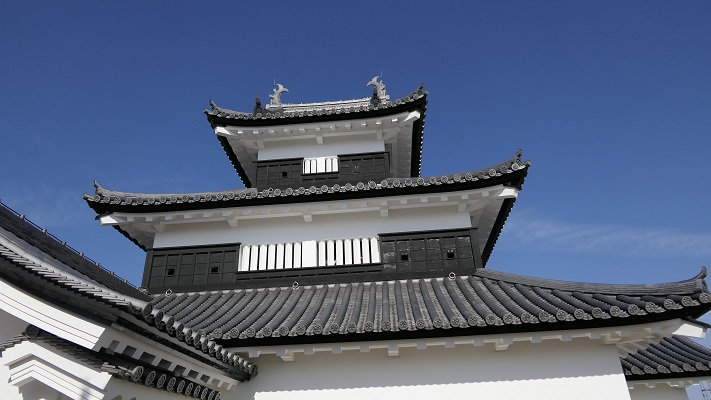
ところが新たな問題が発生しました。国の当局が、櫓は「建築物」ではないのだからビジターを櫓のほとんどの場所には入れてはいけないと言ってきたのです。最終的には1993年に建築基準法に歴史的建築物に対する例外規定が追加され、御三階櫓は全て公開されることになったのです。
But another problem occurred as the government made the most part of the turret inaccessible visitors, because it was not “a building”. At last, the law had the provisions to be exempt for historical buildings in 1993. The three story turret Gosankai-yagura was finally open to visitors.
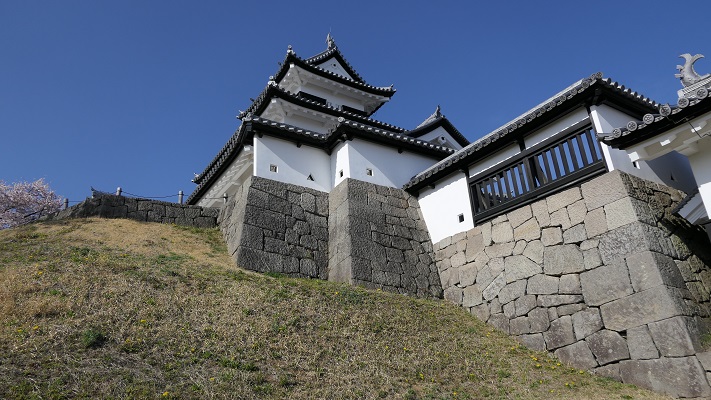
My Impression
本当に白河市の職員、市民の方々の成果に対しては尊敬の念を抱きます。その真摯な努力は、日本の城郭維持の新しい方法への流れを導いたと言えます。白河小峰城のケースは、その後続く白石城、掛川城、大洲城などの「平成の木造復元ブーム」のさきがけとなったのです。
I really respect the achievement of the officials and people in Shirakawa City. Their great effort led to the movement towards new methods for maintaining castles in Japan. The case of Shirakawa-Komine Castle was the pioneer of “The boom of wooden restoration in the Heisei era” followed by other castles such as Shiroishi, Kakegawa, Ozu and so on.
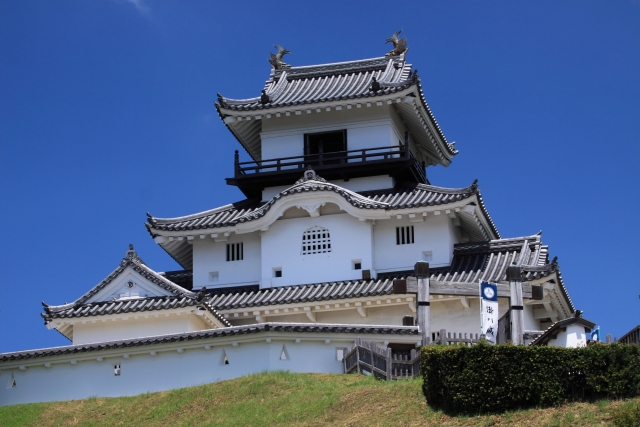
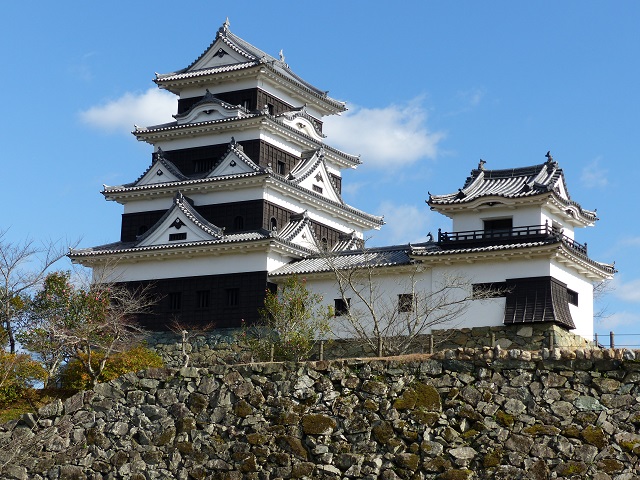
How to get There
白河小峰城は、JR白河駅からすぐ近くです。白河駅のプラットフォームからも御三階櫓の素晴らしい眺めを見ることができます。
東京から白河駅まで:東北新幹線で新白河駅まで行き、東北本線に乗り換え。次の駅が白河駅です。
The castle is very near the JR Shirakawa station. You can even see the nice view of Gosankai-yagura from the platform.
From Tokyo to the station: Get the Tohoku Shinkansen super express to the Shin-Shirakawa st., and transfer to the Tohoku Line. The destination will be the next station.
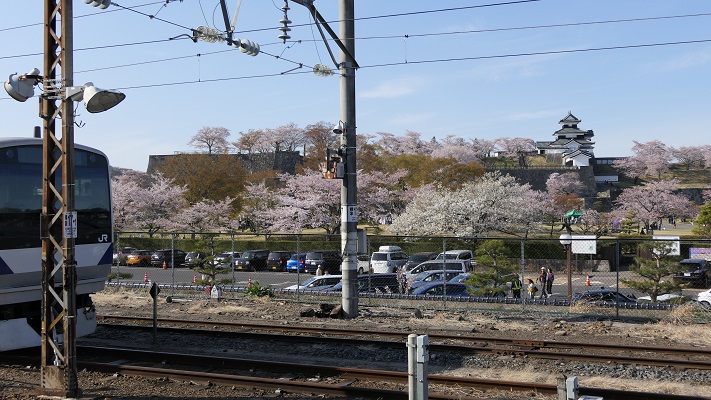
Links and References
・小峰城跡【こみねじょうあと】 | 白河市公式ホームページ(City of Shirakawa)
・埋木帖~城の復元と法令① 白河小峰城三重櫓(only Japanese)





